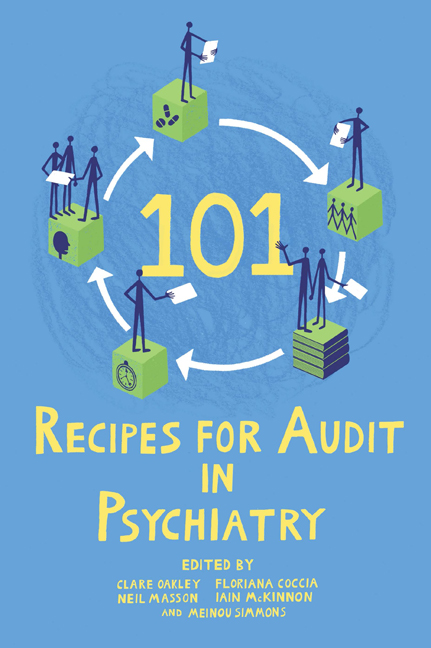II - Legislation
Summary
Setting
This audit is suitable for all areas of psychiatry where patients are detained under the Mental Health (Care and Treatment) (Scotland) Act 2003. It would also be possible to convert the methodology to other jurisdictions that use similar mental health legislation.
Background
The Mental Health (Care and Treatment) (Scotland) Act 2003 came into force in October 2005. With regard to documentation of consent to treatment, form T2 is required if the patient consents to treatment, and form T3 is used if the patient does not or is unable to consent to treatment. These forms must be completed within 2 months from the time when treatment was first administered under the Act. Form T3 is completed by a designated medical practitioner (DMP) appointed by the Mental Welfare Commission for Scotland. A separate form, T4, is completed if emergency treatment is given under the Act.
Standards
Standards were taken directly from the Mental Health (Care and Treatment) (Scotland) Act 2003. Of particular relevance were the following:
▸ All patients should have a T2/T3 form completed within the specified time.
▸ The medical notes should contain an entry specifying when the Mental Welfare Commission was informed of the need for a T3 form.
▸ All medication given for mental disorder should be authorised with a consent to treatment form.
▸ If the patient is prescribed high-dose antipsychotics, the requirement for monitoring should be recorded on the consent to treatment form.
▸ A label should be attached to the medication prescription to show that a T2 or a T3 form has been completed to authorise the treatment.
▸ The form, or a copy of it, should be kept with the patient's medication prescription.
Method
Data collection
Initially, the population under study was defined. In the original audit, this was all patients detained for more than 2 months in the hospital. It would be possible to limit this to a particular ward or team. A list of detained patients for the defined population was provided by the local medical records department.
- Type
- Chapter
- Information
- 101 Recipes for Audit in Psychiatry , pp. 61 - 76Publisher: Royal College of PsychiatristsFirst published in: 2017

